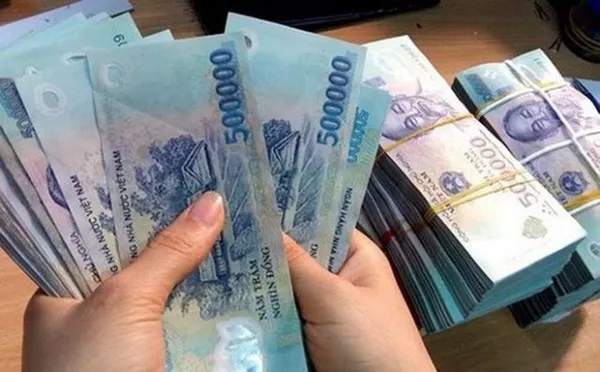 Society
Society

 |
| The gate of Đông Khê Village in Đan Phượng. — VNS Photo Tố Như |
By Tố Như
HÀ NỘI — In a ground-breaking achievement, Đan Phượng is emerging as the vanguard of new-style rural development, setting the bar high as the first locality in the country to meet the stringent standards.
The district, nestled in Hà Nội, continues to shape itself as a trendsetter, showcasing exemplary strides in elevating and modelling new-style rural communities. With all fifteen of its communes now acknowledged as model new-style rural havens, it stands at the forefront of the capital's urban evolution.
A Milestone: Achieving 100 per cent model new-style rural communes
The recent addition of Liên Hồng, Hạ Mỗ and Thọ An communes to the prestigious new-style rural areas list, meeting the prerequisites for municipal recognition of the model new-style rural standard, marks a pivotal moment for Đan Phượng. The district proudly boasts a 100 per cent completion rate in communes achieving this esteemed standard, a significant leap propelling it towards a swift trajectory of urban-focused development.
Over the years, the leadership of Đan Phượng, spearheaded by the District Party Committee, People's Council and People's Committee, has demonstrated unwavering commitment and decisive action in steering comprehensive measures. Their concerted efforts have mobilised the entire political apparatus and the local populace towards a common goal. Notably, the district's vision revolves around crafting model new-style rural areas with a touch of sophistication, aligning with the criteria for transforming the district into an urban entity and its communes into wards.
Strategic investments in infrastructure tailored to meet the criteria of new-style rural areas reflect the district's modern approach. Nearly VNĐ1.8 trillion (US$74 million) has been allocated, ensuring a seamless blend of modernity and urban development criteria. By the close of 2023, the district will boast an impressive 98.2 per cent of schools meeting national standards, with 39 schools achieving level 2 standards—a notable uptick from 2022. Healthcare standards are equally robust, encompassing all communes and towns.
The district has eradicated poverty entirely, with 491 near-poor households witnessing a significant reduction of 233 households from the outset of 2023. Employment opportunities for 5,400 individuals have surpassed expectations, achieving a commendable 114.89 per cent of the set plan.
 |
| The whole area of Đan Phượng is clean, green, and beautiful thanks to the New-style rural areas programme. — VNS Photo Tố Như |
Agricultural innovation and sustainable practices
Đan Phượng's agricultural landscape undergoes a remarkable transformation, with 1,618.89 out of 3,600 ha witnessing a shift in crop structure. Organic vegetable cultivation, VietGAP-certified fruit trees, and unique agricultural initiatives in various communes underscore the district's commitment to sustainable practices. Noteworthy is the cultivation of black grapes in Phương Đình and Đan Phượng, tofu production in Hồng Hà and Hạ Mỗ, and the establishment of eight collective agricultural product brands.
Nguyễn Viết Đạt, Director of the Economic Department, said that leadership is pivotal in the success of Đan Phượng's model new-style rural development. A proactive approach to propaganda, alignment with central and municipal directives, and a focus on resource mobilisation underscore the district's commitment to sustained progress.
A standout feature in Đan Phượng's journey is the proliferation of smart villages. The district has successfully established 16 community digital technology teams and 129 technology teams in villages and residential clusters. These teams, comprising over 1,000 members, play a crucial role in disseminating information on socio-economic issues, actively engaging with residents, and capturing valuable feedback.
Each commune hosts a smart village incorporating intelligent communication, e-commerce and innovative services such as smart healthcare and agriculture. Đạt emphasises the integral role these smart villages play in fostering a connected and forward-thinking community.
The district's commitment to a cultural renaissance is evident in its impressive rise from 62 per cent cultural villages and hamlets in 2020 to an impressive 99.2 per cent. A proactive approach to security is highlighted by the removal of all 15 communes from the Ministry of Public Security's list of municipalities needing to focus on security and order. A community-driven initiative involving the construction of a model dyke line has garnered widespread support, mobilising more than VNĐ30 billion for village beautification and the creation of over 6.7 kilometres of model dyke lines.
According to Trần Đức Hải, Secretary of the District Party Committee, the district's trajectory towards urbanised rural areas is green, cultured, and sophisticated. Future plans include key infrastructure projects, the greening of public spaces and the continuation of smart village models. The district aims to fortify its cultural and economic landscape, ensuring a seamless transition to an urban-centric future.
Nguyễn Văn Chí, Deputy Head of the Coordination Office of the National Targeted Program on New Rural Development, commends the relentless efforts of model new-style rural areas in enhancing the quality of their rural landscapes.
As Đan Phượng stands at the forefront of model new-style rural development, the district's journey becomes a beacon of inspiration, offering valuable lessons for other localities in the capital seeking to enhance the quality of their rural landscapes. — VNS
 |




